- Clone
- S19004C (See other available formats)
- Regulatory Status
- RUO
- Other Names
- Killer Cell Lectin Like Receptor C1, KLRC1, NK Cell Receptor A
- Isotype
- Mouse IgG1, κ
- Ave. Rating
- Submit a Review
- Product Citations
- publications
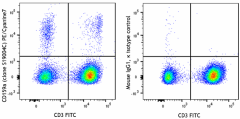
-

Human peripheral blood lymphocytes were stained with CD3 FITC and CD159a (NKG2A) (clone S19004C) PE/Cyanine7 (left) or mouse IgG1, κ PE/Cyanine7 isotype control (right).
| Cat # | Size | Price | Quantity Check Availability | Save | ||
|---|---|---|---|---|---|---|
| 375113 | 25 tests | 132€ | ||||
| 375114 | 100 tests | 329€ | ||||
CD159a, also known as NKG2A or KLRC1, is a type II transmembrane protein. It belongs to the killer cell lectin-like receptor family also known as the NKG2 family. It is expressed on NK and NKT cells and T cell subsets. NKG2A is an inhibitory NK cell receptor and it is expressed as a heterodimer with CD94. In human, NKG2A/CD94 complex interacts HLA-E on target cells and inhibits T cells and NK cell effector functions. Recent studies showed that NKG2A blockade enhances the anti-tumor effect of NK cell and CD8+ T cells.
Product DetailsProduct Details
- Reactivity
- Human
- Antibody Type
- Monoclonal
- Host Species
- Mouse
- Immunogen
- Human NKG2A/CD94-transfectants
- Formulation
- Phosphate-buffered solution, pH 7.2, containing 0.09% sodium azide and BSA (origin USA)
- Preparation
- The antibody was purified by affinity chromatography and conjugated with PE/Cyanine7 under optimal conditions.
- Concentration
- Lot-specific (to obtain lot-specific concentration and expiration, please enter the lot number in our Certificate of Analysis online tool.)
- Storage & Handling
- The antibody solution should be stored undiluted between 2°C and 8°C, and protected from prolonged exposure to light. Do not freeze.
- Application
-
FC - Quality tested
- Recommended Usage
-
Each lot of this antibody is quality control tested by immunofluorescent staining with flow cytometric analysis. For flow cytometric staining, the suggested use of this reagent is 5 µL per million cells in 100 µL staining volume or 5 µL per 100 µL of whole blood. It is recommended that the reagent be titrated for optimal performance for each application.
- Excitation Laser
-
Blue Laser (488 nm)
Green Laser (532 nm)/Yellow-Green Laser (561 nm)
- Application Notes
-
Clone S19004C does not cross-react with mouse CD159a.
- Product Citations
- RRID
-
AB_2888865 (BioLegend Cat. No. 375113)
AB_2888865 (BioLegend Cat. No. 375114)
Antigen Details
- Structure
- Type II transmembrane proteins of the C-type lectin superfamily
- Distribution
-
NK cells, NKT cells, T cell subsets
- Function
- Inhibiting NK cell receptor
- Ligand/Receptor
- HLA-E
- Cell Type
- Lymphocytes, NK cells, NKT cells, T cells
- Biology Area
- Immuno-Oncology, Immunology
- Molecular Family
- Immune Checkpoint Receptors
- Antigen References
-
- Brooks AG, et al. 1999. J Immunol. 162:305-13.
- Kaiser BK, et al. 2008. Proc Natl Acad Sci U S A. 105: 6696-701.
- Braud VM, et al. 2003. Trends Immunol. 24:162-4.
- Kamiya T, et al. 2019. J Clin Invest. 129:2094.
- André P, et al. 2018. Cell. 175:1731.
- Gene ID
- 3821 View all products for this Gene ID
- UniProt
- View information about CD159a on UniProt.org
Customers Also Purchased
Compare Data Across All Formats
This data display is provided for general comparisons between formats.
Your actual data may vary due to variations in samples, target cells, instruments and their settings, staining conditions, and other factors.
If you need assistance with selecting the best format contact our expert technical support team.
 Login / Register
Login / Register 










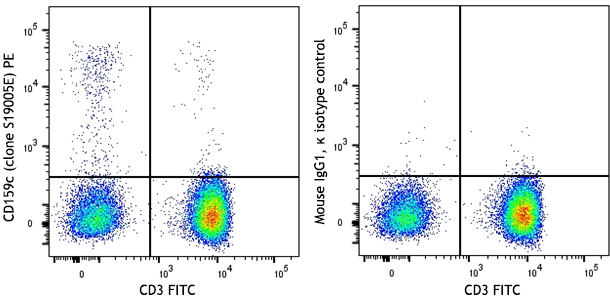
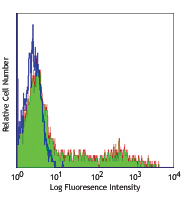
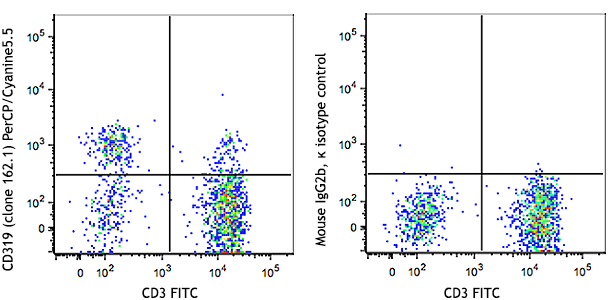
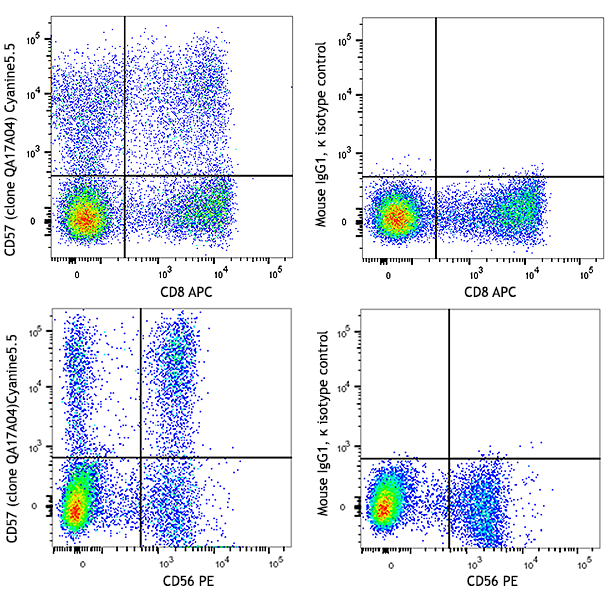



Follow Us